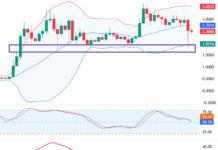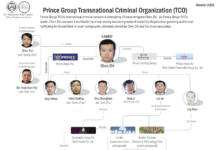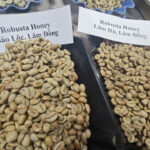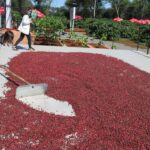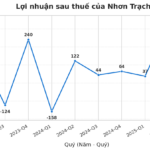Declining Export Volume, Rising Value
The Vietnam Coffee – Cocoa Association (VICOFA) report on Vietnam’s coffee export turnover for the 2023-2024 crop year (running from October 2023 to October 2024) states that Vietnam exported approximately 1.46 million tons of coffee, marking a 12.1% decrease compared to the 2022-2023 crop year.
According to VICOFA, despite a reduction in export volume, the value surged by over 33% due to higher coffee prices. Consequently, coffee exports during this period contributed more than USD 5.4 billion to Vietnam’s export turnover.
Throughout the crop year, Vietnamese coffee prices consistently reached new peaks, attaining the highest level in 30 years. On October 30, based on a survey conducted by PV Tien Phong, coffee material prices in the Central Highlands ranged from VND 105-109 million per ton. In contrast, on October 30, 2023, the highest price for coffee material in the region was only VND 58-59 million per ton.
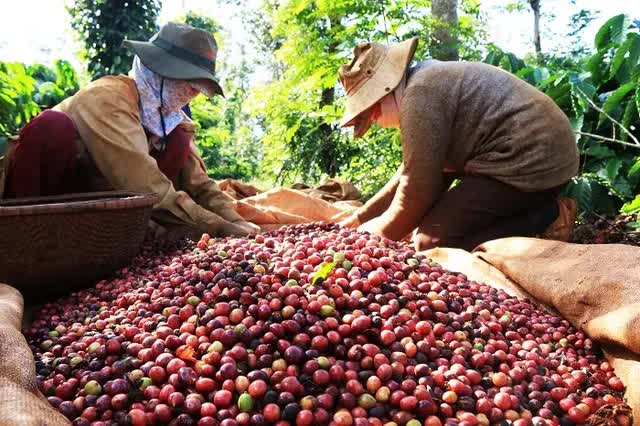
Coffee exports hit a record, reaching USD 5.43 billion. Illustrative image.
VICOFA forecasts that Vietnamese coffee prices in the 2024-2025 crop year will remain high.
Data from the General Department of Customs reveals that coffee exports from Vietnam during the first half of October this year amounted to 21,500 tons, with a turnover of USD 125.8 million. This represents an increase of 0.4% in volume and 7.5% in value compared to the first half of September. In comparison to the first half of October 2023, there was a surge of over 20% in volume and 98% in value.
A Dynamic Export Market
Despite the significant growth in coffee export turnover, Vietnam’s coffee production is on a downward trend.
Mr. Nguyen Nam Hai, Chairman of VICOFA, commented: “The area dedicated to coffee cultivation has been shrinking due to low coffee prices in previous years, which impacted farmers’ incomes. As a result, they switched to other crops. It will be challenging to increase the area and yield of coffee in the coming years. We should seek suitable measures for long-term development instead of relying heavily on the market.”
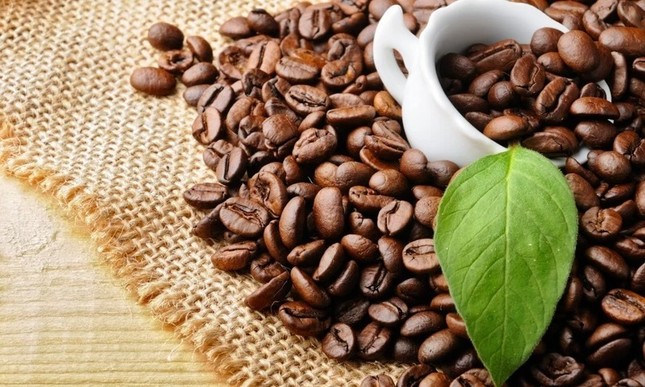
Coffee prices have been on an upward trajectory recently. Illustrative image.
The surge in global coffee prices can be attributed to various factors, including the impact of climate change and the El Nino phenomenon, which has caused droughts in coffee-growing regions worldwide, leading to reduced supply.
Additionally, military conflicts worldwide have contributed to higher transportation costs and other expenses associated with exports. The presence of financial speculators in the coffee market has also significantly influenced prices.
According to Mr. Nguyen Nam Hai, a crucial factor in the rising coffee prices is the EU’s anti-deforestation regulation (EUDR). Currently, Vietnamese coffee is exported to over 80 countries and territories worldwide.
The EU’s anti-deforestation regulation (EUDR) stipulates that, from December 30, companies must provide proof that their agricultural products (including coffee) intended for the EU market are not linked to deforestation; otherwise, they will be unable to export to this market. However, small businesses have until July 2025 to comply with this regulation. As a result, European businesses are actively procuring coffee.
The implementation of this regulation will likely have a significant impact on Vietnam’s coffee export market in the future.
“A Brewing Headache: The Conundrum of the Latest Coffee Craze”
“As coffee prices surge, farmers rejoice while businesses brace for a challenging season ahead. The upcoming harvest looms large, with rising costs putting pressure on an industry already facing a slew of economic hurdles. With input expenses climbing, the future looks uncertain for those tasked with bringing our favorite brew to the masses.”
The Magic of Coffee: Unveiling the Secrets Behind the Skyrocketing Prices
Robusta coffee prices on the London exchange soared to a peak of almost $5,500 per ton last night, surging by up to $240 per ton before taking a dramatic downward turn.






















